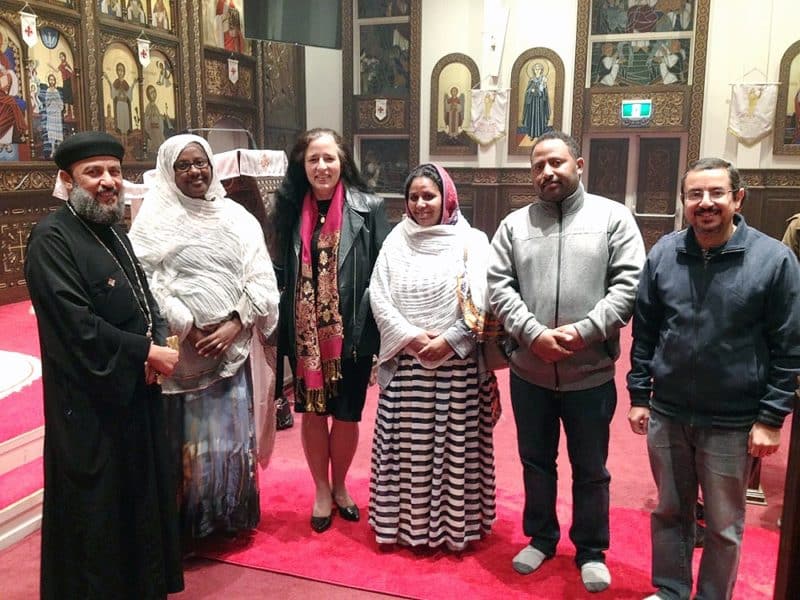Ethiopia is a large, landlocked county in the Horn of Africa. It is more than four times the size of Aotearoa New Zealand. Many people consider Ethiopia as the cradle of humanity, with local fossil finds dated from 200,000 years ago, and archaeologists having discovered a 30,000-year-old shelter. Christianity reached Ethiopia in the fourth century, which makes it one of the first countries in the world to have adopted Christianity.
A few years ago, New Zealander Nic Birt travelled to Ethiopia to visit some of the ancient places of Christianity. He had heard of rock-hewn churches, and wanted to see them.
These churches were hewn into the heights of the rocky mountains in Tigray Province, Northern Ethiopia. Mr Birt had to climb the rocks or go on a terrifying walk along a ledge, about 200 metres up a cliff. However, once he reached the sacred places, he was amazed at what he saw: columns, arches and domes, painted in vibrant, ancient Byzantium style.
This visit that started out of curiosity, turned into a very special pilgrimage. When Mr Birt returned to New Zealand, he was looking for ways to share this experience.
Titipounamu Study and Joy, an initiative founded by this writer, offered to organise an event at which this was possible. An appropriate venue was found: the St Mark’s Coptic Orthodox church in Birkdale, Auckland.
The congregation of this church is mainly Egyptian, Ethiopian and Eritrean Christians. Their priest, Fr Bishoy Mekhaiel, was happy to welcome the guests in his beautiful church.
On the evening of May 29, the participants gathered for vigil prayers. The local community had invited the guests to be with them for their chanted prayers in Arabic, Coptic and English. This chanting was accompanied by rituals using plenty of incense, and several senses were engaged: the sight, the smell, and the hearing.
More than 80 people followed the invitation to hear about the rock-hewn churches, and felt transported into a different time and a different world.
Mr Birt presented breath-taking pictures from his visits to rock-hewn churches. He confirmed that these churches, despite the challenge to reach them, were being used for about 1600 years.
After the presentation, the visitors were invited to a cuppa and had the opportunity to socialise with the local community. An Ethiopian group stood up and sang a traditional song in Ge’ez, the ancient Semitic language of Ethiopia.
When they mingled with the guests, some of the Ethiopians shared their concerns for their homeland and family members left behind. The region of Tigray Province, where the beautiful ancient places of worship are located, is currently at war, and thousands of people are leaving the region, seeking refuge in neighbouring countries. Some of the beautiful ancient sites of Christianity have been damaged, looted or destroyed during the conflict.
“Please pray for our people. Don’t forget them”, was an urgent plea from members of this community. Many farms have been destroyed and people displaced. The United Nations news report from the beginning of June, 2021, estimated that about 350,000 people in Tigray are at risk of famine. It is sad to hear. The “cradle of humanity” is at war, and many people are not aware of it.

[…] Article in NZCatholic […]